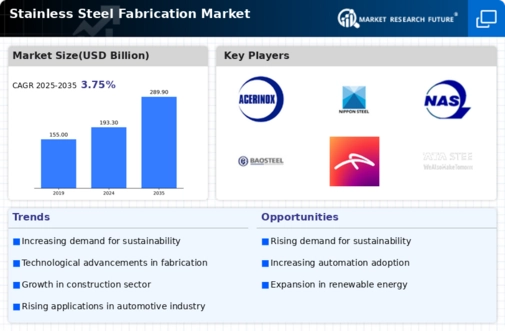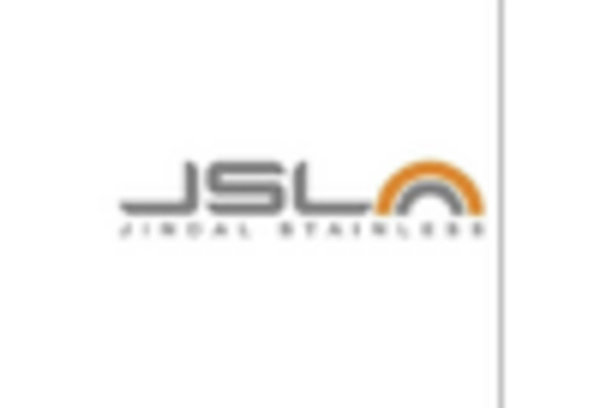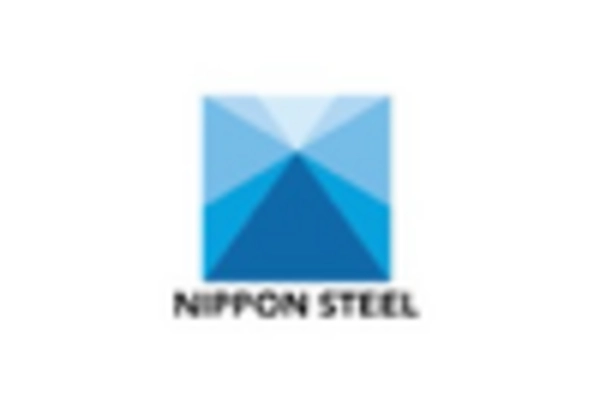Expanding Automotive Industry
The automotive industry is witnessing a shift towards the use of stainless steel in vehicle manufacturing, which is positively impacting the Stainless Steel Fabrication Market. As automakers seek to enhance vehicle performance and safety, stainless steel's strength and lightweight properties make it an attractive option for various components. The Stainless Steel Fabrication Market is expected to grow at a compound annual growth rate of around 4% through 2026, which could lead to increased demand for stainless steel parts. Additionally, the rise of electric vehicles (EVs) is likely to further drive this demand, as manufacturers look for materials that can improve energy efficiency. This trend suggests that the stainless steel fabrication sector may need to adapt to meet the evolving requirements of the automotive industry, potentially leading to new applications and innovations.
Growing Focus on Sustainability
Sustainability is becoming a central theme in the Stainless Steel Fabrication Market, as consumers and businesses alike prioritize eco-friendly practices. Stainless steel is 100% recyclable, which aligns with the increasing demand for sustainable materials in various sectors. The market for recycled stainless steel is projected to grow significantly, driven by initiatives aimed at reducing carbon footprints. In 2025, it is estimated that the use of recycled materials in fabrication could reduce energy consumption by up to 50% compared to traditional methods. This shift towards sustainability not only appeals to environmentally conscious consumers but also encourages manufacturers to adopt greener practices. As regulations around sustainability tighten, companies that prioritize eco-friendly fabrication processes are likely to gain a competitive edge, further propelling the growth of the stainless steel fabrication market.
Rising Demand in Construction Sector
The construction sector is experiencing a notable surge in demand for stainless steel fabrication, driven by its durability and aesthetic appeal. Stainless steel is increasingly favored for structural applications, facades, and interior designs. In 2025, the construction industry is projected to grow at a rate of approximately 5.5%, which is likely to bolster the Stainless Steel Fabrication Market. This growth is attributed to urbanization and infrastructure development, particularly in emerging economies. As cities expand, the need for robust materials that can withstand environmental challenges becomes paramount. Consequently, stainless steel's corrosion resistance and low maintenance requirements make it an ideal choice for builders and architects alike. This trend suggests a sustained increase in the demand for stainless steel fabrication services, potentially leading to innovations in design and application.
Increased Investment in Infrastructure Development
Investment in infrastructure development is a key driver for the Stainless Steel Fabrication Market. Governments and private entities are allocating substantial funds towards building and upgrading infrastructure, including bridges, highways, and public transportation systems. In 2025, infrastructure spending is projected to reach unprecedented levels, with an emphasis on using durable materials like stainless steel. This material's resistance to corrosion and longevity makes it a preferred choice for critical infrastructure projects. As countries focus on enhancing their infrastructure to support economic growth, the demand for stainless steel fabrication services is likely to rise. This trend indicates a robust market environment, where companies involved in stainless steel fabrication may experience increased opportunities for collaboration and project engagement.
Technological Innovations in Fabrication Processes
Technological advancements in fabrication processes are transforming the Stainless Steel Fabrication Market. Innovations such as laser cutting, robotic welding, and 3D printing are enhancing precision and efficiency in production. These technologies not only reduce waste but also allow for complex designs that were previously unattainable. The integration of automation in fabrication processes is expected to increase productivity by up to 30% by 2026. As manufacturers adopt these technologies, they can offer customized solutions to meet diverse client needs, thereby expanding their market reach. Furthermore, the ability to produce high-quality stainless steel components at a lower cost may lead to increased competition within the industry. This competitive landscape could drive further investments in research and development, fostering a cycle of continuous improvement and innovation in stainless steel fabrication.


















Leave a Comment